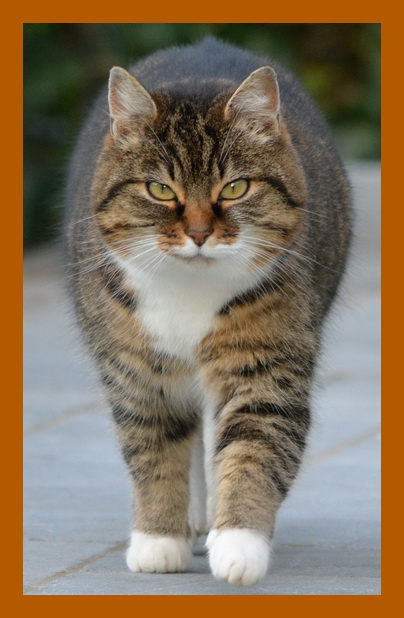Information provided about specific medical procedures or conditions is for educational purposes to allow for educated, on-going discussion with your vet and is not intended to replace veterinary advice.
 |
Diabetic Cat
Care The Liver's Job |
The liver is an amazing and truly determined organ. Not only is it the body's main
toxin filter, it also is the only organ in the body able to regenerate cells
over a short period of time. The really miraculous thing about the liver
is the job it does once it's been woken up from the onslaught of dry food and
high carb wet foods that knock it out, rendering it useless to protect from
asymptomatic clinical hypo - just as if it was sucker punched in a fight. To help promote the best liver function possible for our cats, it's highly
recommended to add a supplement regime which works to ensure the liver is kept
in prime form. Supplements such as Milk Thistle/Sylmarin, L-carnitine, and
Taurine work together to maximize toxins being filtered out of the system, and
to keep cells regenerating. Diabetic cats, especially those with liver
issues and/or
pancreatitis, are especially well-served by
adding supplements to their daily meals. Even if your cat has
perfectly normal liver values, adding these supplements will not hurt and might
just be a great preventative. The liver's main function is to keep the cat safe from low BG by stimulating glucose
production. When a cat is being fed dry/high carb food keeping the BG constantly
high, the liver becomes accustomed to those high numbers and basically goes to sleep, no
longer able to function properly so it can do it's job of protecting the brain
by kicking out glycogen
in the event of low BG. Once the dry/high carb food has been removed from the diet, very quickly the liver "wakes up" and will resume its most
important function, converting glucagon into glycogen and releasing it into the
system to protect the brain. If you give syrup or
high carb foods to low BG with no symptoms of clinical hypo, you run the risk of putting
the liver right back to sleep, resulting in your cat being at continued risk of clinical hypo
once again, and needing to go through another detox while the sugars make their way
out of the system. To keep the liver functioning as it should, when experiencing low BG, feeding
low carb wet food in small amounts until the BG begins to rise and the time of
nadir has been passed, keeps the liver from falling back to sleep.
More information on why we need the liver to be wide awake and ready to work is available in
both the
Protocol and
the Detox Process
documents. Most vets do not understand the BG of non-FD cats rest between 2.5/45 and
6.6/120.
Because of the stress of car rides and vet visits, the BG of most cats are significantly
elevated by the time the vet sees them and unless a vet has cats at home who
they test regularly the result is most vets consistently assume these high BG
the repeatedly see that their clinics are
normal for all cats. They are NOT! If you are unsure about what is a normal BG for a cat, try testing your non-FD cats, or
a friend’s civvy – it truly will be an eye-opening and calming experience! After you’ve had your first experience with a low BG and have seen for yourself
that your cat is fine (other than being hungry and perhaps a bit noisy), you will not have a fear
of low numbers again.
©
Diabetic Cat Care
- 2009- 2016